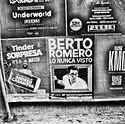Thanks Sandy.
Yes, I knew that you were using a slightly acid developer, from previous correspondence. I also remember that you were toning your Kallitypes with gold or platinum or palladium. Maybe toning will obscure the effect of any silver dissolution (due acidic developer) that MAY have occured. Therefore, perhaps it's best to test it with un-toned prints, to see if indeed acidic developer does any harm to the image.
To my knowing / IIRC, Mike Ware's writings about any of the iron-silver processes doesn't mention anything about toned iron-silver prints.
Have you tested and/or used neutral (pH 7) developer, BTW?
I value what have been said by you both. In the practical sense, with so much experience with the process, I'd 100% rely on what you say about kallitypes. OTOH, my own experience with Vandykes (a similar iron-silver process) is that: when you wash the print in neutral water (in first baths right after exposure) it changes color (and lightens/bleach) only after 1-2 minutes, whereas when you use citric acid as the fist wash, the color change / bleaching (this term is not in the sense of erasing the image here - just getting lighter...) is immediate. Therefore, acidity has definitely some effect, but its significance may not be that much - especially when taking into account your vast practical experience. (BTW, silver nitrate's colloidal silver dissolution phenomenon would affect the highlights more than the shadows, I presume - therefore highlights also should be taken into account...)
Personally, I would pay attention to keep my developer as neutral as possible, if I also see the probability of making un-toned prints (from the same negative or using different negatives) and/or I use in-camera negatives (with digital negatives, you calibrate based on the result and you can have separate calibrations for each variation; toned, untoned, different DR requirements, different paper / developer etc. combinations...), AND if I don't experience difficulties in clearing the prints, at the same time...
Best regards,
Loris.







